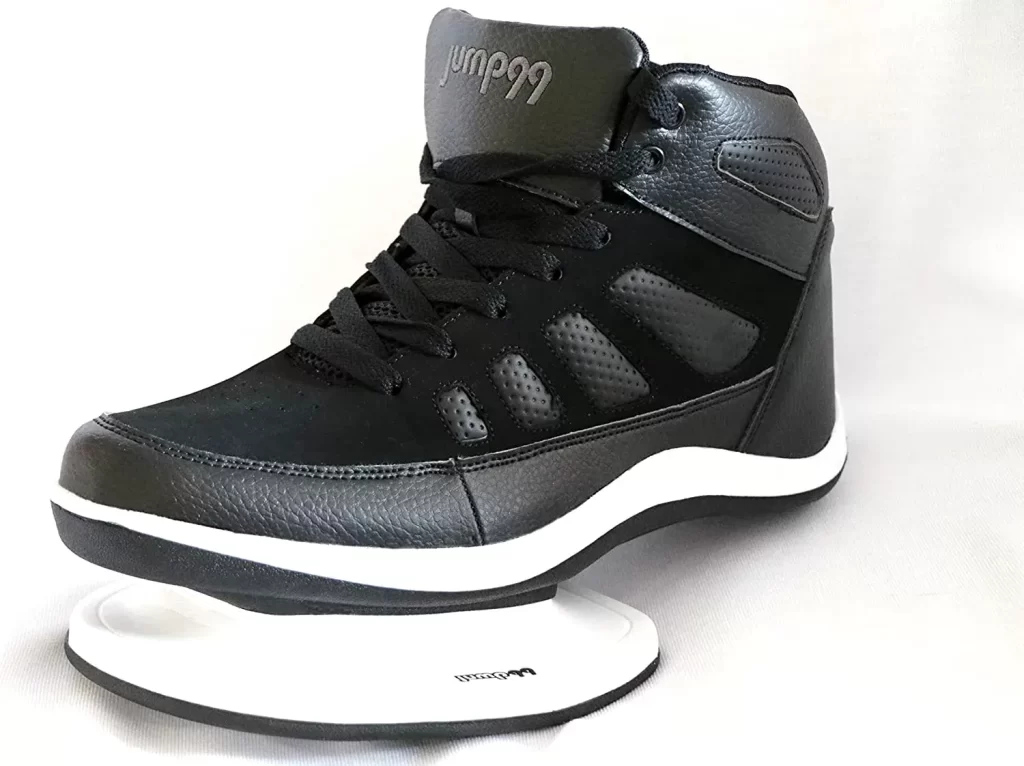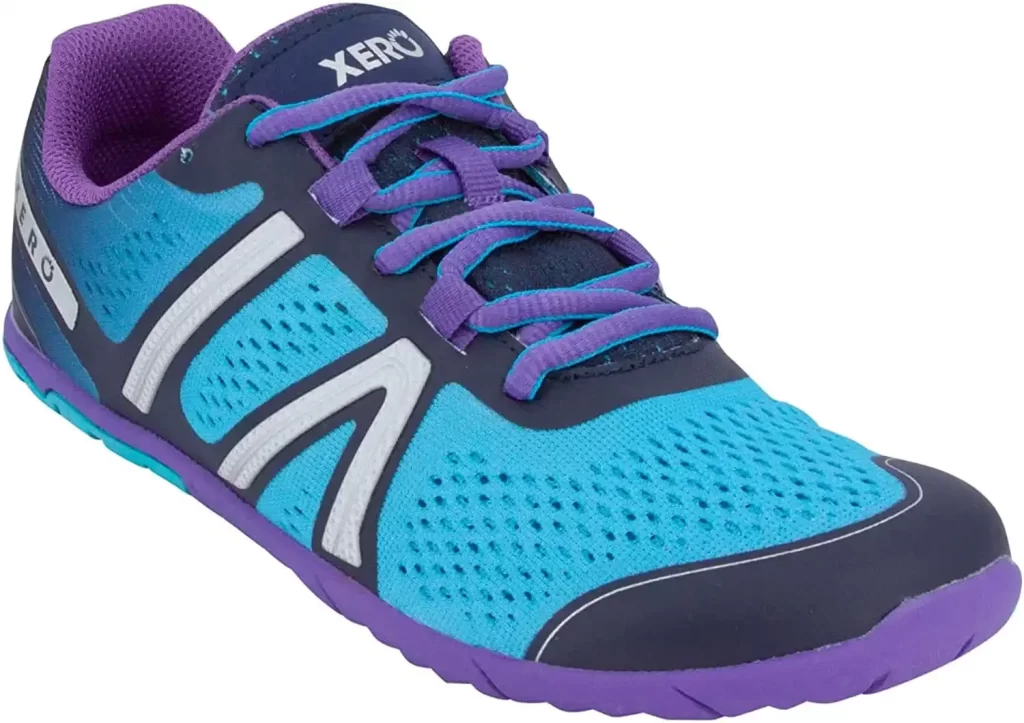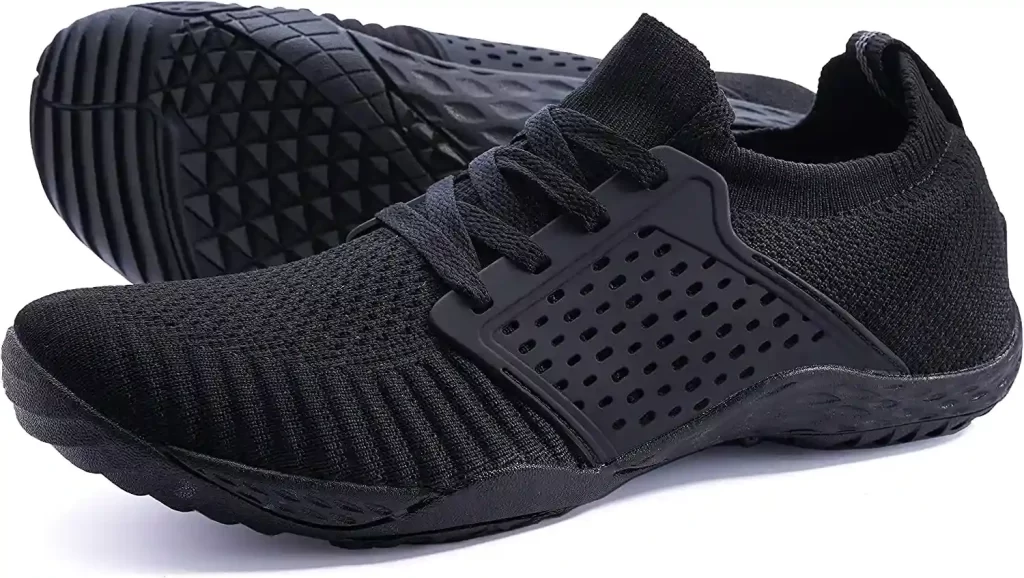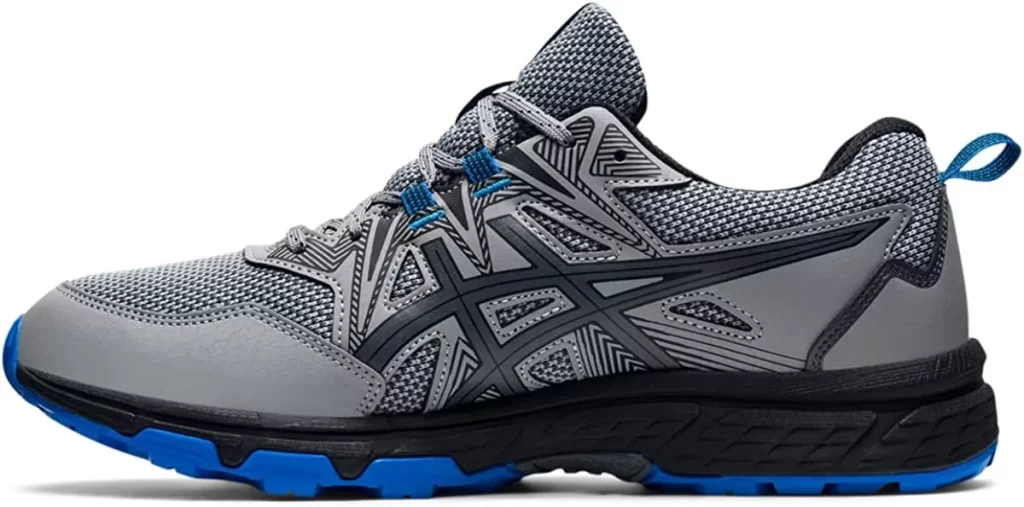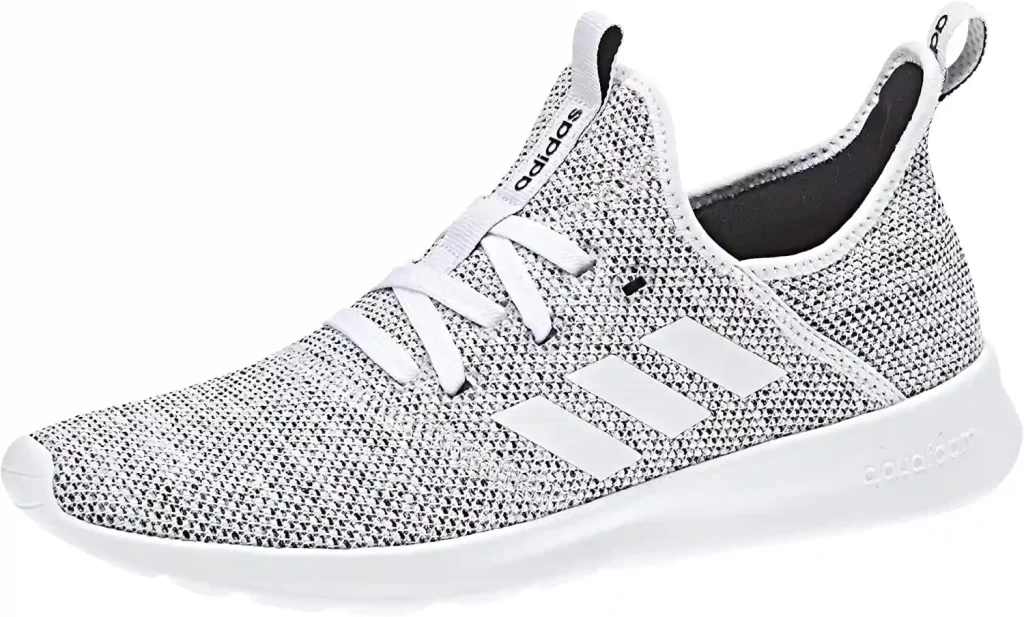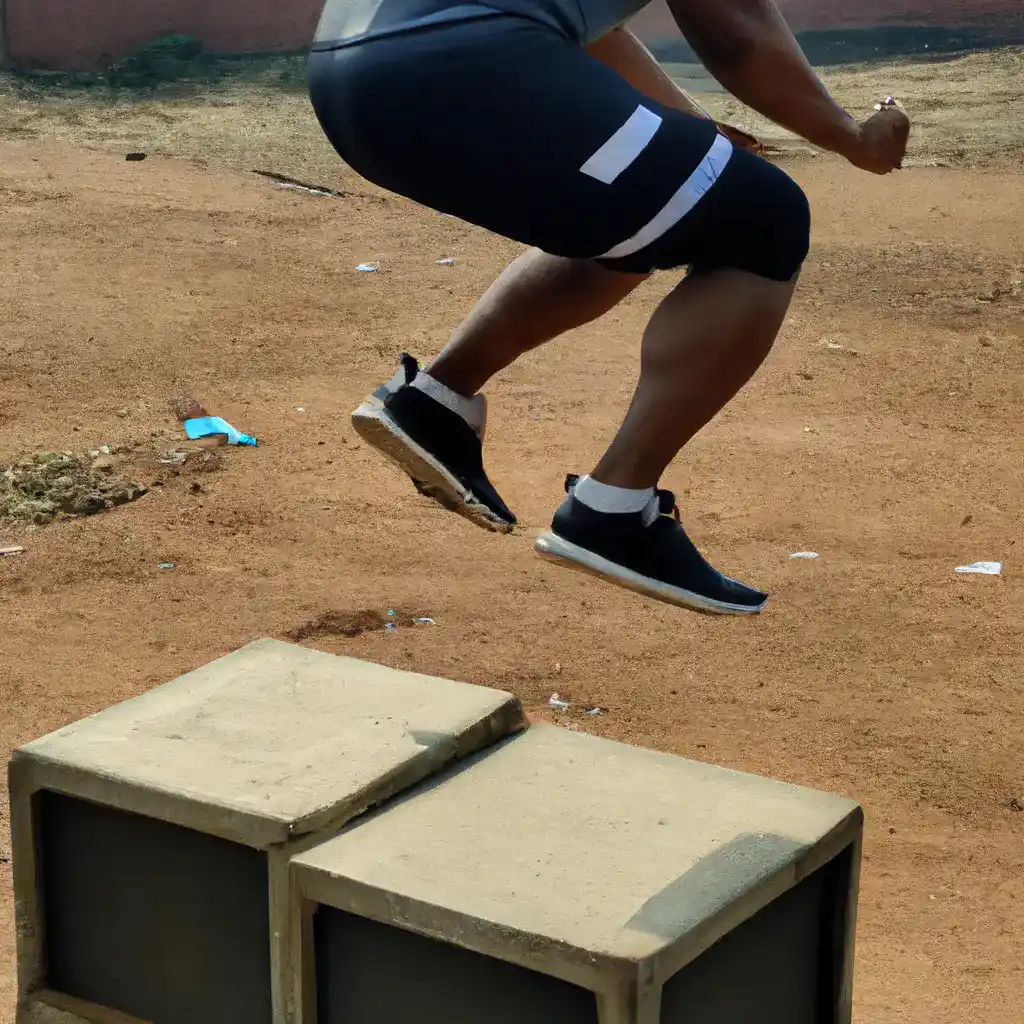
When performing plyometrics exercises, having the proper footwear is essential to maximize results while minimizing injuries.
This guide evaluates some of the top shoes for plyometrics, including the Jump99 Ultra Strength Plyometric Training Shoes, Xero Shoes Women’s HFS Plyometrics Training Shoes, and WHITIN Men’s Cross-Trainer.
Each of these shoes incorporates important design elements like flexible middles, cushioned soles, and extra heel and toe reinforcement, critical features that provide the support and protection needed for the high impacts of plyometric workouts.
Top 7 Best Shoes for Plyometrics Workout and Training:
Here is a list of the 7 best plyometrics workout training shoes for jump training or Plyometrics :
- Jump99 Ultra Strength Plyometric Training Shoes
- Xero Shoes Women’s HFS Plyometrics Training Shoes – Lightweight & Barefoot Feel
- WHITIN Men’s Cross-Trainer | Barefoot & Minimalist Plyometrics Shoe
- ASICS Men’s Gel-Venture 8 Running Shoes
- Adidas Cloudfoam Pure – Comfortable Plyometrics Workout Shoes
- Under Armour Men’s Charged Assert 9 Running Shoe
- ASICS Women’s Gel-Nimbus 23 Running Shoes
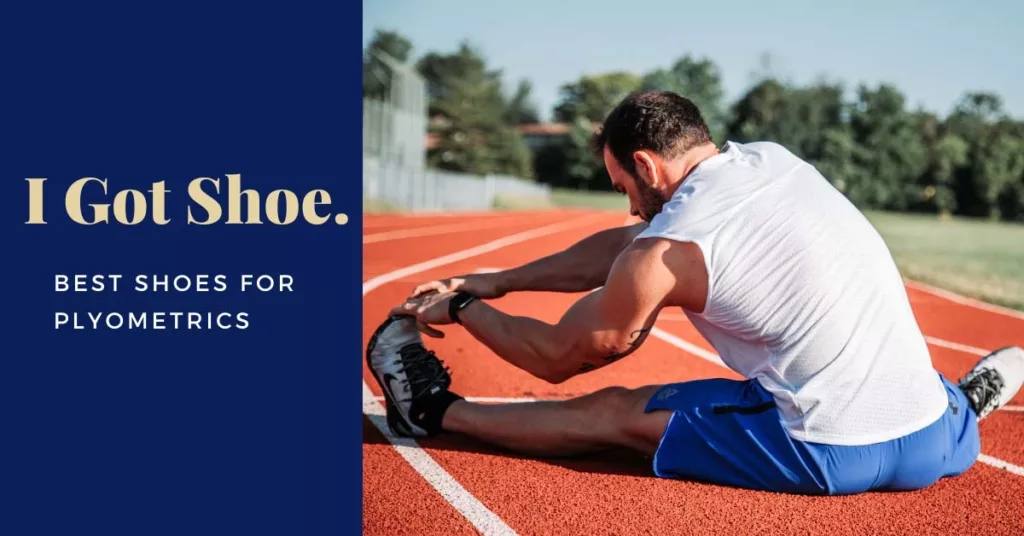
You can check out our guide on the Best Shoes for Plantar Fasciitis.
What Is Plyometrics?
The plyometric exercise involves jumping as far as you can, sprinting as fast as you can, or performing other explosive movements.
These exercises improve your leg muscles, speed up your metabolism, and pump up your endorphins which makes you feel happier!
| Feature | Recommended | Not Recommended |
| Fit | Snug but comfortable fit | Loose or tight fit |
| Cushioning | Responsive foam or gel cushioning | Hard or thin cushioning |
| Traction | Rubber sole with patterned tread | Smooth or slippery sole |
| Flexibility | Flexible sole and breathable upper | Stiff or non-breathable upper |
| Weight | Lightweight and minimalist design | Heavy or bulky design |
Can Plyometrics increase speed?
This out this article if you want to know about that.
Top Picks for Best Shoes for Plyometrics
As someone who’s been doing plyometric workouts for years, I know firsthand how important it is to have the right shoes.
Whether you’re doing box jumps, burpees, or other explosive movements, you need shoes that provide both cushioning and stability.
After extensive research and testing, I’ve put together this list of the best shoes for plyometrics.
These shoes offer the perfect combination of support, comfort, and durability, so you can crush your workouts without worrying about your footwear.
1. Jump99 Ultra Strength Plyometric Training Shoes
If you’re looking for a shoe that will help you increase your vertical jump, fast twitch muscle, and speed, the Jump99 Ultra Strength Plyometric Training Shoes are worth considering.
From my experience, the Jump99 Ultra Strength Plyometric Training Shoes are a great option for anyone looking to improve their vertical jump and fast twitch muscle.
The shoes are comfortable and durable, and the platform design is unique and effective.
However, it’s important to note that the shoes may not fit everyone perfectly, so it’s important to message the manufacturer if you have any issues with sizing.
Additionally, the lack of a training manual may be a downside for some users, but there are plenty of resources available online to help you get started with plyometric training.
Overall, I would recommend these shoes to anyone looking to take their plyometric training to the next level.
Pros
Cons
Deliver unparalleled CrossFit performance- order today on Amazon.
2. Xero Shoes Women’s HFS Plyometrics Training Shoes – Lightweight & Barefoot Feel
If you’re looking for a pair of shoes that offer comfort, flexibility, and durability for your plyometric workouts, then the Xero Shoes Women’s HFS Running Shoes might be the perfect fit for you.
As someone who has tried many different shoes for plyometric workouts, I can confidently say that the Xero Shoes Women’s HFS Running Shoes are a great choice.
The spacious toe box allows for natural toe splay, while the patented 5.5mm FeelTrue sole provides just the right amount of protection and feedback.
Plus, the shoes are vegan-friendly and travel-friendly, making them a convenient option for those on the go.
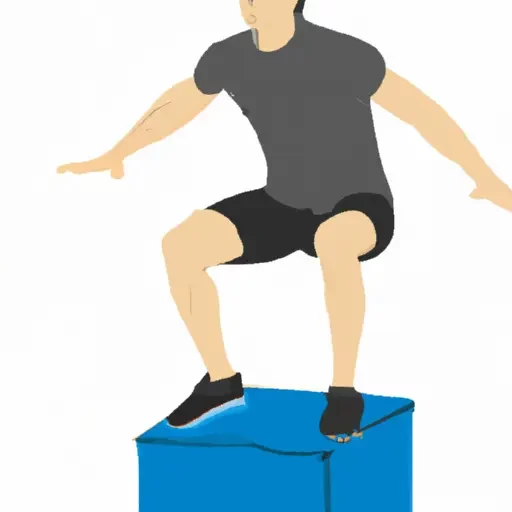
One thing to keep in mind is that these shoes may not be suitable for those who require a lot of arch support.
Additionally, the breathable design may not be ideal for colder-weather workouts.
However, if you’re looking for a lightweight, minimalist shoe that allows you to flex your feet and feel the floor, then the Xero Shoes Women’s HFS Running Shoes are worth considering.
Overall, I highly recommend the Xero Shoes Women’s HFS Running Shoes for anyone looking for a comfortable, flexible, and durable shoe for their plyometric workouts.
Pros
Cons
Perfect gift for someone who wants to stay ahead of the competition
.
3. WHITIN Men’s Cross-Trainer | Barefoot & Minimalist Plyometrics Shoe
If you’re looking for a comfortable, minimalist shoe that allows you to feel the ground beneath your feet, the WHITIN Men’s Cross-Trainer is a great choice.
I’ve been using these shoes for plyometric exercises for a few weeks now, and I’m really impressed with their performance.
The zero-drop sole provides a natural feel and promotes proper posture and balance, while the sticky-grip rubber outsole ensures that I stay stable during even the most intense workouts.
The shoes are also incredibly lightweight and breathable, which is great for preventing foot sweat and odor.
The only downside is that the knit upper may not be as durable as other materials, but so far I haven’t had any issues with wear and tear.
If you’re looking for a minimalist shoe that provides excellent grip, cushioning, and comfort, the WHITIN Men’s Cross-Trainer is worth checking out.
Also check: Best shoes for shin splint
Pros
Cons
Comes in a variety of colors and styles
4. ASICS Men’s Gel-Venture 8 Running Shoes
If you are looking for a comfortable and durable pair of shoes for plyometrics, the ASICS Men’s Gel-Venture 8 Running Shoes are a great option.
I have been using these shoes for my plyometric workouts for a few weeks now and I am really impressed with their performance.
The GEL technology provides excellent cushioning and shock absorption, which is essential for high-impact exercises like jump squats and box jumps.
The shoes also have a great grip on different surfaces, which makes them perfect for outdoor workouts.
However, I did notice that the padding towards the heel of the shoe can create a loose feel if you slide your foot forward during certain exercises.
The laces are also thin and the tongue can slide to the side during workouts, which can be a bit annoying.
Additionally, the shoes are very breathable, which is great for summer workouts but may not be ideal for colder weather.
Overall, I would highly recommend the ASICS Men’s Gel-Venture 8 Running Shoes for anyone looking for a comfortable and durable pair of shoes for plyometrics and other high-impact exercises.
Related: Are basketball shoes good for working out?
Pros
Cons
5. Adidas Cloudfoam Pure – Adidas cross training shoes
If you’re looking for a comfortable shoe that provides excellent cushioning for plyometrics, the Adidas Cloudfoam Pure Running Shoes are a great option.
Overall, the Adidas Cloudfoam Pure Running Shoes are a great choice for anyone looking for a comfortable and cushioned shoe for plyometrics.
The stretchy mesh upper and Cloudfoam cushioning provides a comfortable and supportive fit, while the sock-like construction hugs the foot for added stability.
However, those with wider feet may find the shoes too narrow, and it’s important to note that the shoes may run small, so it’s recommended to go up a half size.
Additionally, the shoes may not be as durable as some other options on the market.
That being said, I’ve personally used these shoes for plyometric workouts and have found them to be incredibly comfortable and supportive.
The Cloudfoam cushioning provides excellent shock absorption during high-impact exercises, and the stretchy mesh upper allows for breathability and flexibility.
Overall, I would highly recommend the Adidas Cloudfoam Pure Running Shoes for anyone in need of a comfortable and cushioned shoe for plyometrics.
Also check: Best shoes for water aerobics
Pros
Cons
Perfect Pair for any kind of workout.
6. Under Armour Men’s Charged Assert 9 Running Shoe
I highly recommend the Under Armour Men’s Charged Assert 9 Running Shoe for anyone looking for a comfortable and durable shoe for plyometrics.
I recently tried out the Under Armour Men’s Charged Assert 9 Running Shoe for my plyometric workouts and was impressed with their performance.
The lightweight mesh upper allowed my feet to breathe and prevented them from getting too sweaty during intense workouts.
The durable leather overlays provided the stability I needed to perform explosive movements with confidence.
The Charged Cushioning midsole provided excellent responsiveness and durability, allowing me to push myself to the limit without worrying about my shoes breaking down.
One thing to keep in mind is that the sizing may be a little off, so make sure to measure your feet before purchasing.
Additionally, the shoes may not be suitable for people with wider feet.
Lastly, the shoes are not waterproof, so they may not be suitable for outdoor workouts in wet conditions.
Overall, I highly recommend the Under Armour Men’s Charged Assert 9 Running Shoe for anyone looking for a comfortable and durable shoe for plyometrics.
Pros
Cons
7. ASICS Women’s Gel-Nimbus 23 Best sneakers for plyometrics
If you’re looking for a shoe that provides excellent shock absorption and stability, the ASICS Women’s Gel-Nimbus 23 Running Shoes are a great choice.
Overall, I was impressed with the ASICS Women’s Gel-Nimbus 23 Running Shoes.
The cushioning provided excellent shock absorption, making it comfortable to land during plyometric exercises.
The engineered mesh upper also kept my feet cool and comfortable, even during intense workouts.
The only downside was the price, but I believe it’s worth it for the quality and durability of the shoe.
If you’re looking for a reliable and comfortable shoe for your plyometric workouts, the ASICS Women’s Gel-Nimbus 23 Running Shoes are worth considering.
Want to know more about lifting shoes?
checkout Are Basketball shoes good for lifting?
Pros
Cons
What to Look for to Find out the best Comfortable Workout shoes for plyometrics & running
1. Fit:
The best option for athletes is a shoe that fits well and offers great stability.
Since you are lifting your feet off the ground to jump, it’s important to have shoes that provide good traction on different surfaces so you can be confident in where you put down your foot next.
Avoid running shoes with less support or cushioning since they may not offer the best comfort during your workout sessions.
Check here Are basketball shoes good for working out?
When it comes to choosing the best cross-training shoes for plyometric exercises, there are a few things to consider.
First, look for a shoe with an extended heel, as this will provide better balance and stability during jumping movements like box jumps.
It can help reduce the risk of injuries such as sprained ankles or twisted knees from landing incorrectly.
Additionally, opt for a shoe that offers good cushioning and support to absorb impact and protect your joints.
Look for shoes that are lightweight and flexible, allowing for natural movement and agility.
Finally, consider the durability and overall quality of the shoe to ensure it will withstand the demands of plyometric exercises.
2. Comfortability:
You want your shoes to feel comfortable.
If you’re doing a workout that requires jumping, such as plyometrics, your feet will be on the ground for less than half of the time and they’ll take more contact with the floor.
So it’s best not to wear shoes you are already used to wearing when doing these types of workouts.
You want your feet to feel comfortable and supported, but not too constricted or heavy during the workout session.
3. Traction:
Look for shoes that have a solid grip on the ground.
The best option is ones with rubber soles, but it’s best to avoid buying running shoes because they are usually made of lightweight materials and don’t offer much traction.
Some runners prefer minimalist cross trainers which might not provide enough stability when doing plyometrics-based workouts like box jumps or sprints across an obstacle course.
In this case, you would want to wear something more supportive in order to feel stable during your workout sessions.
4. Low top shoe:
A low-top shoe will best suit your plyometric workout because it’s less restrictive and offers more mobility, which is important for jump training.
Low-top shoes are also best suited to outdoor workouts with rough terrain such as trails or grassy areas where you’ll need the flexibility that a lower cut provides in order to take on any obstacle head-on.
5. The feel of the shoes:
The best shoes for plyometric exercises should feel light yet offer enough support to last through a grueling workout session.
Most people find that the best shoe is one with lightweight materials, good traction on various surfaces, and an extended heel.
Frequently Asked Questions
Should you do plyometrics with shoes?
It is best to do plyometrics without shoes so you can feel the ground and get a better sense of where your feet are.
Can I use running shoes for plyometrics?
Yes, you can use running shoes for plyometrics.
In fact, most athletes use running shoes for plyometric exercises because they are lightweight and provide good cushioning.
However, you may want to consider using a more specialized shoe for plyometrics if you are doing more advanced exercises.
What are plyometric training shoes?
Plyometric shoes are shoes designed to help with plyometric training.
They are typically lightweight and have a low profile to allow for better ground contact.
What is good for plyometrics?
There are various types of plyometrics.
Front box jumps, lateral box jumps, weighted lateral jumps, broad jumps, skater jumps, and scissor jumps all help strengthen the muscles in your legs.
Dot drills are a great way to build strength and coordination because it use both jumping and agility movements.
Lateral box shuffles also work for these abilities as well as challenge your perception of the space around you – try it!
What is wrong with plyometrics?
Plyometrics has a very high risk of injury.
An increased rate of injury from plyometrics is also seen when athletes perform these exercises before an event or before the body is fully warmed up or under conditions that span outside of normal training parameters.
What types of plyometrics exercises are best to use when training?
Skipping, hopping, and jumping are the most common plyometric exercises.
Plyometrics training should be done with a lot of intensity across many sessions to see results.
What happens if you do plyometrics every day?
Muscles can become stronger, more agile, and generally better tuned up for any sort of physical activity.
That’s a workout while you’re working.
Are running shoes good for plyometrics?
Yes, running shoes can be used for plyometrics, but it is recommended to choose shoes that provide good cushioning, support, and stability for the high-impact nature of plyometric exercises.
What surface should you do plyometrics on?
performing plyometric exercises on an aquatic surface or on a sand surface may result in less muscle damage compared to performing them on a firm surface.
Therefore, it is recommended to do plyometrics on a safe and cushioned surface such as sand or in an aquatic setting to reduce the risk of muscle damage and soreness. [1]
Useful Resources:
- “Effects of Plyometric Training on Muscle-Activation Strategies and Performance in Female Athletes” published in the Journal of Athletic Training
- “A Meta-analysis of the Effects of Plyometric Training on Lower Body Power” available in Journal of Strength and Conditioning Research
- The Myths about Plyometrics
- https://www.webmd.com/fitness-exercise/a-z/what-is-plyometrics
- https://www.medicalnewstoday.com/articles/plyometrics
